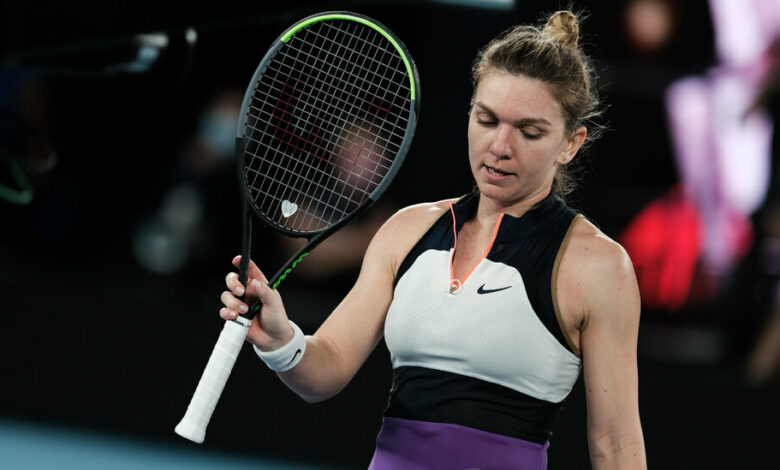Halep gets 4-year ban for doping violation

An independent commission that oversees tennis’ anti-doping rules has banned Romania’s Simona Halep for four years, a ruling that could effectively end the career of the former world No. 1 and two-time Grand Slam champion.
Halep, 31, was charged with two separate violations of the sport’s anti-doping rules after failing a doping test at the 2022 US Open. Halep tested positive for Roxadustat, a drug commonly used to treat people with anemia, a condition caused by low red blood cell counts.
Roxadustat is on the banned substances list because it artificially stimulates the production of hemoglobin and red blood cells, a technique that allows players to gain more stamina. The drug does this by causing the body to produce more of the hormone erythropoietin, commonly known as “EPO”, which plays an important role in the production of red blood cells.
Red blood cells carry oxygen throughout the body. More red blood cells can lead to greater endurance, which is why EPO was a widely used performance-enhancing substance in professional cycling for many years.
Halep was also accused of irregularities in her blood compared to samples the agency had access to as part of her so-called biological passport, which provides doping control officials with a baseline. The three-person tribunal hearing the case between the International Tennis Integrity Agency and Halep ruled that those irregularities pointed to the use of banned substances during the season.
Halep, who had never previously failed a drug test, had argued and provided evidence to support her claim that the Roxadustat was present in a tainted supplement she had taken prior to the US Open, but that it was not listed as one of the ingredients. The court accepted that argument, but after hearing expert testimony, concluded that the contamination of the supplement could not have been the cause of the amount of Roxadustat found in her urine.
Karen Moorhouse, the ITIA’s chief executive, said the agency welcomed the decision after a year-long process that had drawn significant criticism from Halep, coaches she has worked with and other players. Moorhouse said about 8,000 pages of evidence were considered.
“The ITIA has followed the correct procedures, as we would with any other individual – in accordance with the World Anti-Doping Code – and in doing so has fulfilled our purpose and responsibility to uphold the principle of fair competition on behalf of the sport,” she said.
In a statement released through her communications team, Halep said she had never knowingly or intentionally taken a banned substance and that she would appeal the ruling to the Court of Arbitration for Sport, which acts as a high court for sports disputes. She said the evidence she presented to the tribunal was compelling.
“While I am grateful that there has finally been an outcome, after countless unwarranted delays and feeling like I have been living in purgatory for over a year, I am both shocked and disappointed by their decision,” Halep said.
The suspension is the highest-profile ruling in sports since Maria Sharapova, a five-time Grand Slam champion and one of the highest paid female athletes in the worldwas given a two-year suspension in 2016 for a doping violation.
Sharapova tested positive for a heart drug in January 2016, which was said to improve blood flow and help athletes recover faster. This was shortly after the drug was added to the banned substances list.
Sharapova quickly admitted that she had been taking a heart medication whose active ingredient is Meldonium for 10 years to treat what she said were a variety of health problems. She did not know the drug was banned, she said. Sharapova was 29 when she was suspended, and though she returned to tennis, she retired in 2020 at age 32.
If the Court of Arbitration for Sport upholds the suspension, Halep will be banned from playing tennis until October 2026. She has already been provisionally suspended for almost a year.




